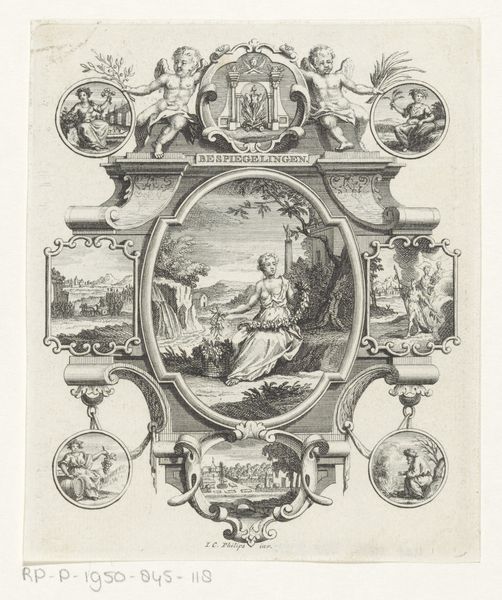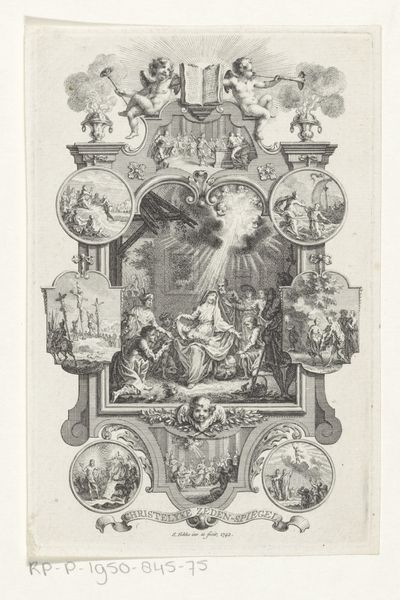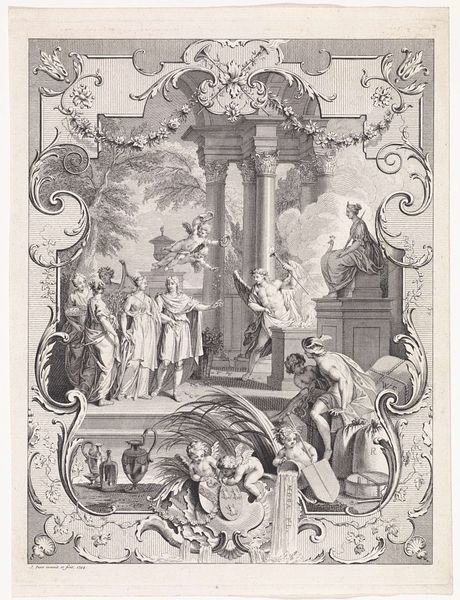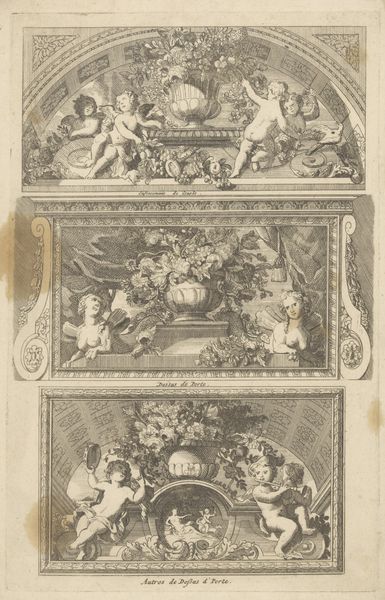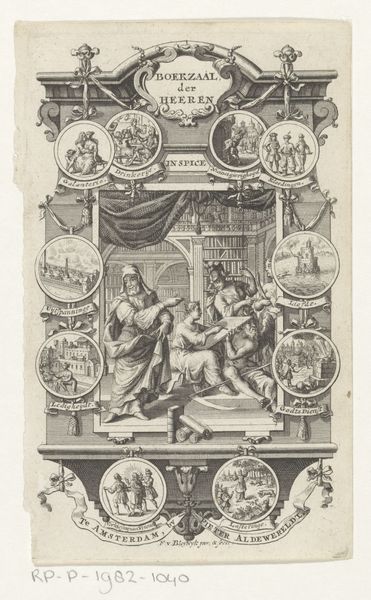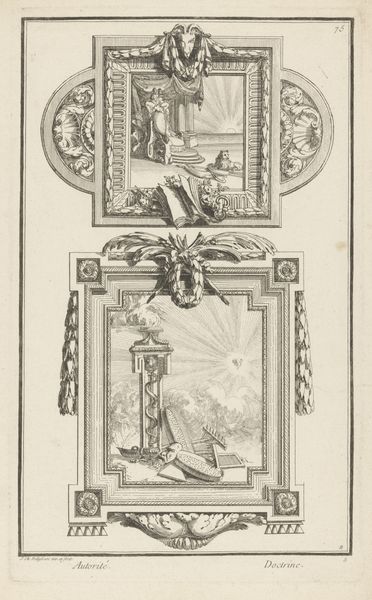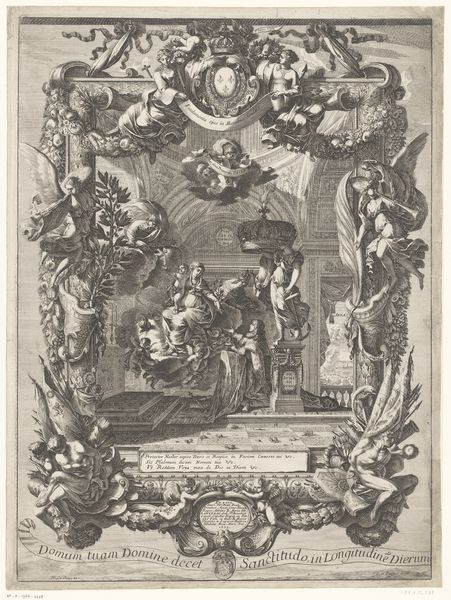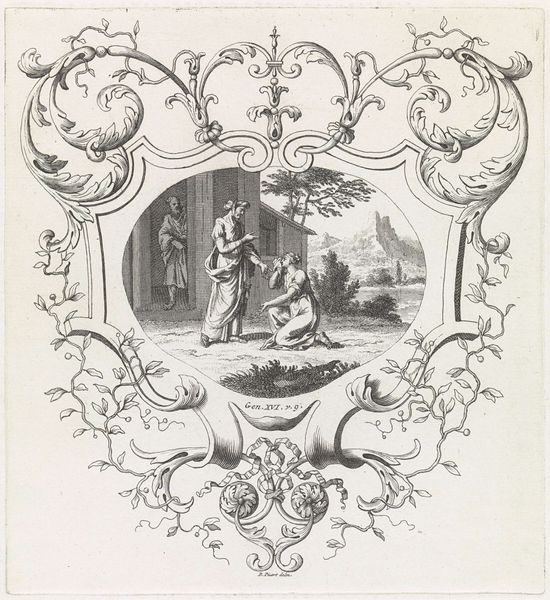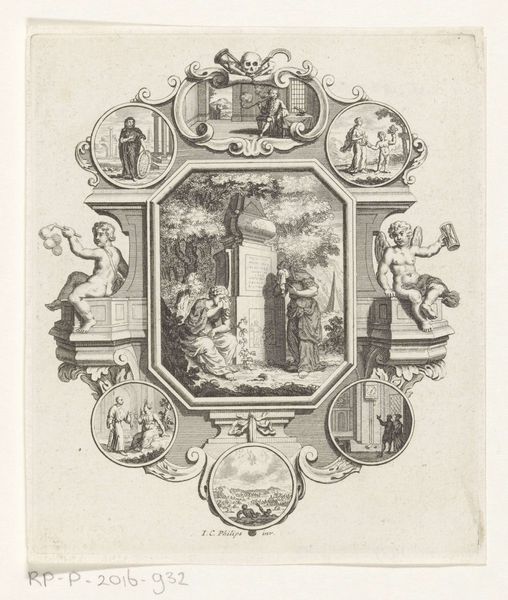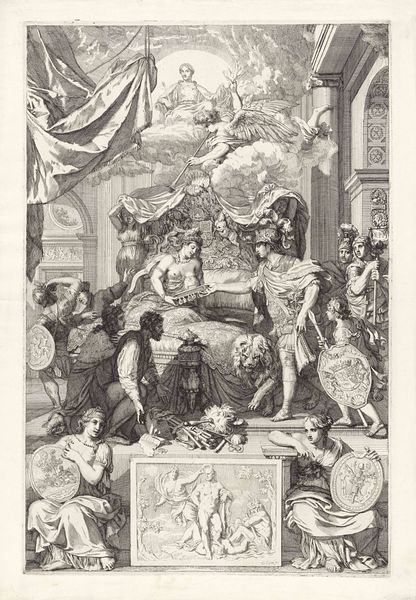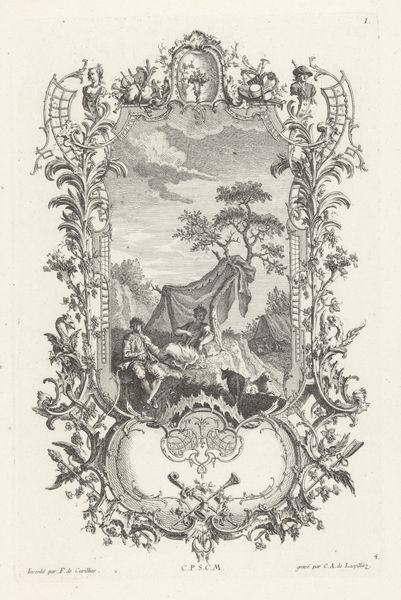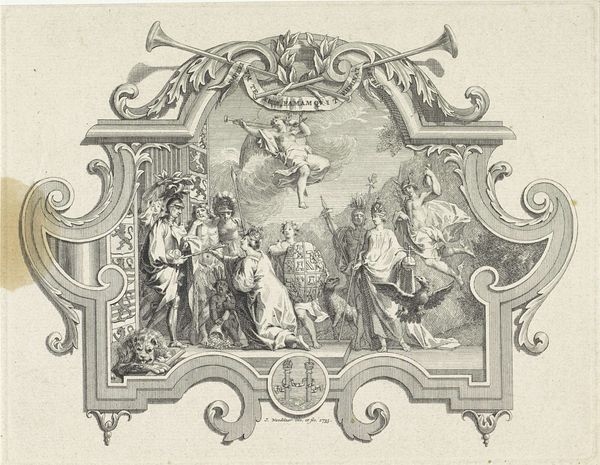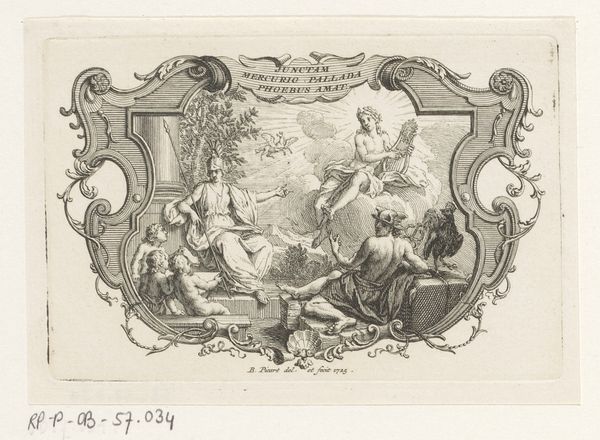
drawing, ink, pen, engraving
#
drawing
#
allegory
#
baroque
#
pen drawing
#
ink
#
pen
#
history-painting
#
engraving
Dimensions: height 159 mm, width 103 mm
Copyright: Rijks Museum: Open Domain
Curator: Immediately, the sheer detail of this piece jumps out—such fine lines and delicate shading. Editor: Indeed. We're looking at an artwork currently held in the Rijksmuseum, titled "Ontwerp voor titelblad: Christelyke Zeden Spiegel," which roughly translates to "Design for a Title Page: Christian Moral Mirror". It’s attributed to Simon Fokke, created in 1741. He used pen and ink for the drawing and engraving. Curator: That's interesting, the process alone reveals a craftsman meticulously rendering scenes within scenes. Look at the upper register. There are tiny cherubs perched above an open book. Was Fokke also thinking about production? About how designs are created, sold, and multiplied? Editor: Absolutely, the framework suggests Fokke's awareness of art's broader societal role. The baroque style also highlights the socio-political context. That era favored grandeur and didacticism, reflected in this visual compendium of Christian stories. Curator: There are various vignettes around the central image, I wonder what stories those relate to. Also, given its function as a design, the very paper it’s drawn on – its weave, its whiteness – it must have been of high quality to render the intended result of this design, a successful print run. Editor: And that intended function heavily influenced its content. Think about who commissioned it, for whom was this moral mirror crafted, and what values were being reinforced through its dissemination. This wasn't simply art for art’s sake; it was visual propaganda embedded in the fabric of 18th-century society. Curator: It’s quite compelling to examine this piece, not as a finalized work, but as a critical step in the chain of production of knowledge, of moral edicts of the era. The materiality speaks to a larger picture of the era, that this piece only starts to visualize. Editor: I agree. It serves as a looking glass onto 1741 itself, not merely a mirror for Christian morals but a window into the forces that shaped its creation and reception.
Comments
No comments
Be the first to comment and join the conversation on the ultimate creative platform.
